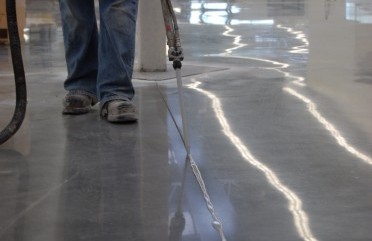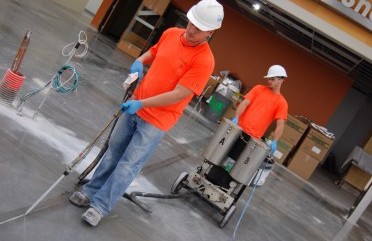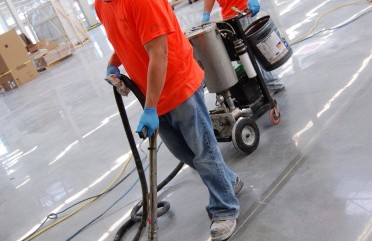Joint Sealants/Spall Repair
Polyurea Joint Sealants is a quick-curing systems allow for rapid return to service with superior durability.
The word "spall" means to break, and this occurs when joints aren't properly cut and filled correctly the first time. As a result, concrete will start to crumble and break apart. If spalling is present be sure to get it repaired to prevent further joint damage.
Why Polyurea Joint Sealants?
These products are specially designed for interior concrete floors and this is the best solution for any cracks and filling control joints. It is a unique mix that cures to a semi-rigid material that can support heavy traffic while preventing any chipping or spalling of edges. Polyurea Joint Sealants are a quick fix, you will be able to welcome heavy traffic in 90 minutes. Polyureas are long-lasting and created to endure large amounts of foot traffic, solid wheels, massive hauls and carts. Polyurea Joint Sealants can also be used for any small surface repair.
Filling control joints is a must to protect and prevent the joint wall from spalling or failure.
Benefits of Polyurea Joint Sealants
- No odor
- Moisture insensitive products available
- Responds well to thermal shock
- Semi-Rigid
- Superior Bonding Qualities
- Fast turn-around time
Things to Know About Proper Joint Sealant Installation
- Re-cutting of the joint wall is required for a solid mechanical bond.
- Joints should be as dry as possible.
- Proper overfilling is required to protect the joint wall.
- Shave within the hour to easily remove excess filler.
Why Does Concrete Crack?
One of the most frequently asked questions about concrete; why does it crack if it’s so strong? Yes that is true, concrete is strong but under certain conditions it can cause damage and break. Some cracks can lead to a serious problem and because of its strength and longevity, concrete is used for both commercial and industrial purposes.
A common reason for concrete cracks is too much water getting mixed into the concrete. When there is extra water added to the mix, it weakens the concrete which results in it becoming prone to crack.
Another common reason that concrete cracks is not letting it dry thoroughly. It has to be completely dried before it can hold any weight or pressure. Heaving is also another reason for cracks in concrete. Heaving is when a tree root grows or freezes causing the ground to move up.
Cracked concrete is mainly a cosmetic issue, unless it’s supporting a structure or if water gets into a crack. If concrete is completely broken it can be harm cars and people.
When Is It Time To Get A Professional Concrete Crack Repair?
Not all concrete cracks are an immediate danger, but do you know when it’s time to call a professional? There are a few questions to ask yourself before making the decision.
- Is the crack continuously getting bigger and is it more than a hairline crack?
- Has the concrete begun to sink in?
- Do you plan on selling your home or business soon?
- Will water exposure cause the crack to get worse?
You should never look to do a “quick fix” as it can cost you more in the long run. One example is a cement patch up, it may seem like a good idea to save money. But the patch will only work until the water gets to the concrete. Which results with you paying to fix the same crack twice. Often times it can lead to worse problems which means more repairs or replacements.
If you are not sure if you concrete needs a professional repair or not, do not risk it! Contact us today.


